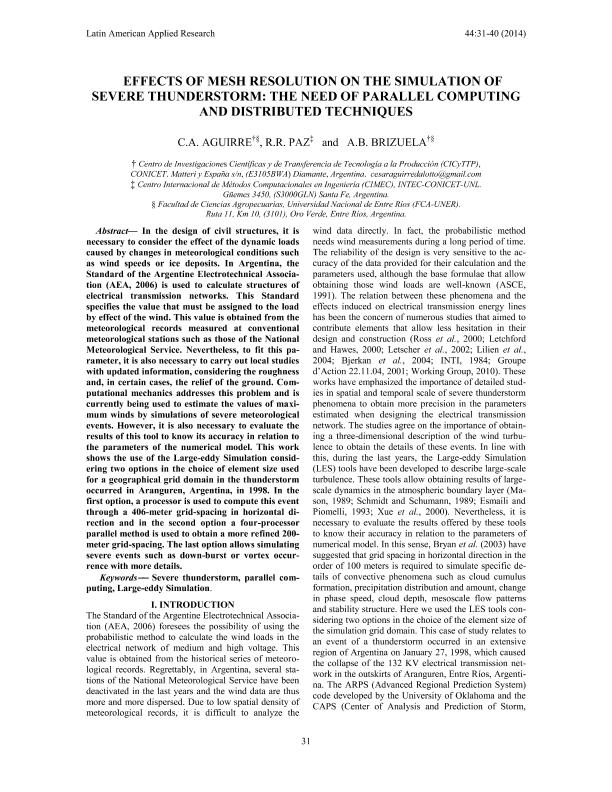Artículo
Effects of mesh resolution on the simulation of severe thunderstorm: the need of parallel computing and distributed techniques
Fecha de publicación:
01/2014
Editorial:
Planta Piloto de Ingeniería Química
Revista:
Latin American Applied Research
ISSN:
0327-0793
e-ISSN:
1851-8796
Idioma:
Inglés
Tipo de recurso:
Artículo publicado
Clasificación temática:
Resumen
In the design of civil structures, it is necessary to consider the effect of the dynamic loads caused by changes in meteorological conditions such as wind speeds or ice deposits. In Argentina, the Standard of the Argentine Electrotechnical Association (AEA, 2006) is used to calculate structures of electrical transmission networks. This Standard specifies the value that must be assigned to the load by effect of the wind. This value is obtained from the meteorological records measured at conventional meteorological stations such as those of the National Meteorological Service. Nevertheless, to t this parameter, it is also necessary to carry out local studies with updated information, considering the roughness and, in certain cases, the relief of the ground. Computational mechanics addresses this problem and is currently being used to estimate the values of maximum winds by simulations of severe meteorological events. However, it is also necessary to evaluate the results of this tool to know its accuracy in relation to the parameters of the numerical model. This work shows the use of the Large-eddy Simulation considering two options in the choice of element size used for a geographical grid domain in the thunderstorm occurred in Aranguren, Argentina, in 1998. In the rst option, a processor is used to compute this event through a 406-meter grid-spacing in horizontal direction and in the second option a four-processor parallel method is used to obtain a more refined 200-meter grid-spacing. The last option allows simulating severe events such as down-burst or vortex occurrence with more details.
Palabras clave:
Severe Thunderstorm
,
Parallel Computing
,
Large-Eddy Simulation
Archivos asociados
Licencia
Identificadores
Colecciones
Articulos(CICYTTP)
Articulos de CENTRO DE INV.CIENT.Y TRANSFERENCIA TEC A LA PROD
Articulos de CENTRO DE INV.CIENT.Y TRANSFERENCIA TEC A LA PROD
Citación
Aguirre, Cesar Augusto; Paz, Rodrigo Rafael; Brizuela, Armando Benito; Effects of mesh resolution on the simulation of severe thunderstorm: the need of parallel computing and distributed techniques; Planta Piloto de Ingeniería Química; Latin American Applied Research; 44; 1; 1-2014; 31-40
Compartir




